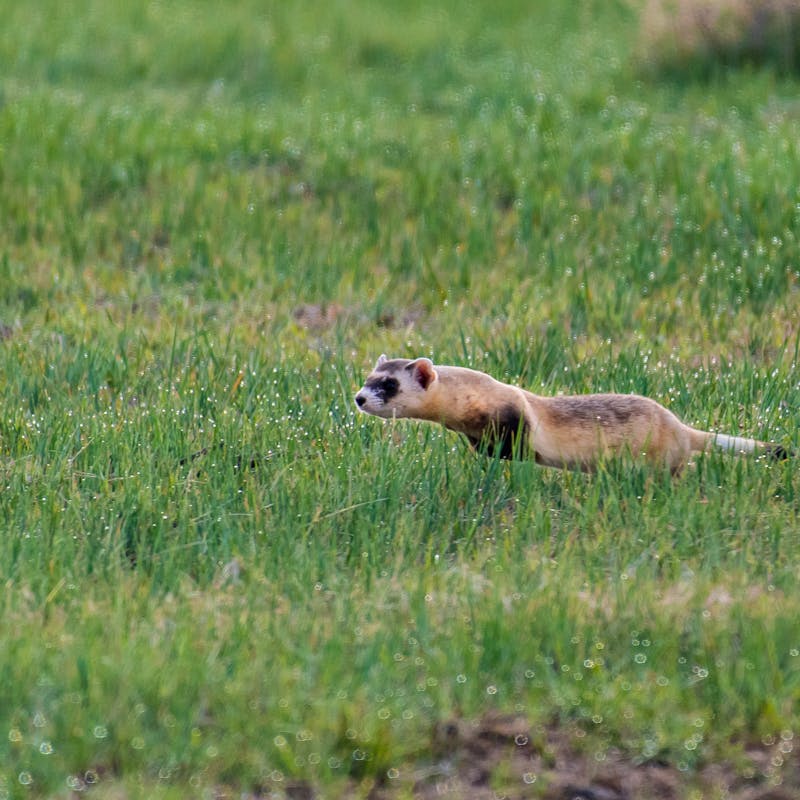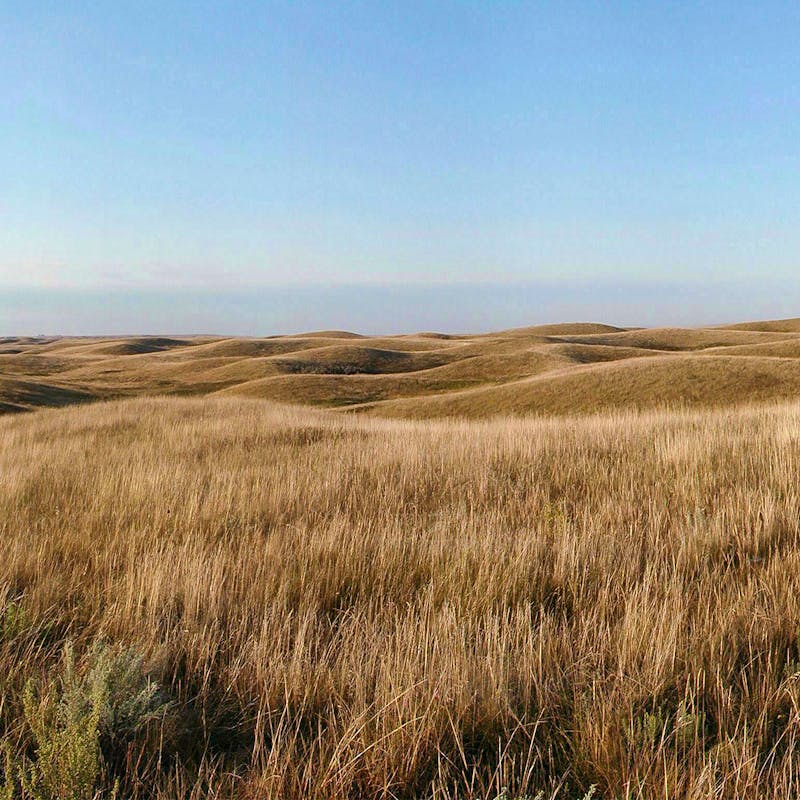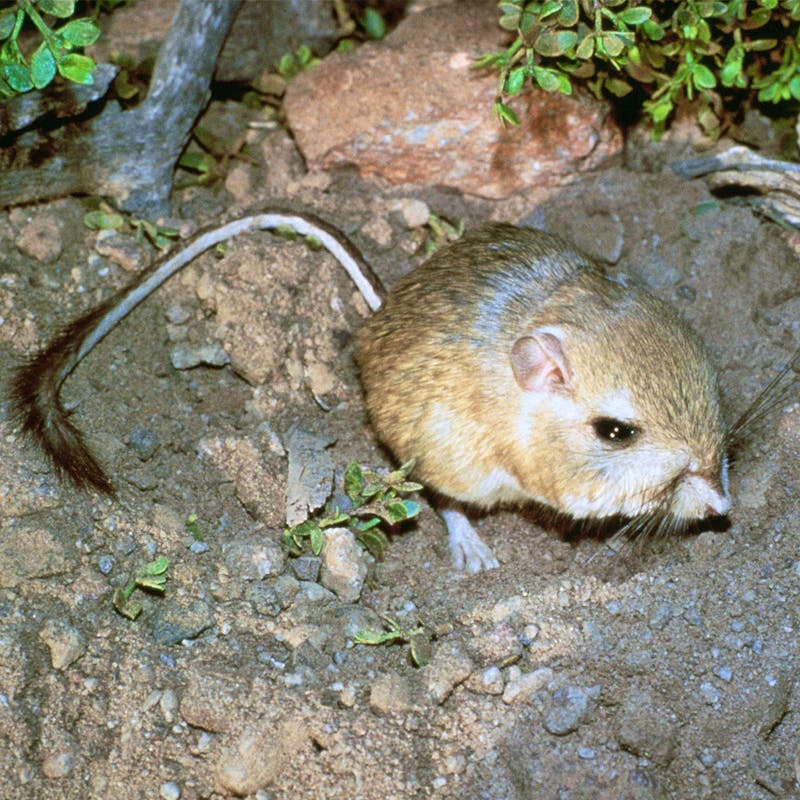Join our mobile Rapid Response Network!
You can be the first to hear about how we’re going to hold the next administration accountable and how you can fight back for wildlife!
The black-footed ferret is different than its domestic counterpart.
This wild ferret depends on prairie dogs and the unique habitat they provide. Black-footed ferrets will raise their kits in the underground burrows made by prairie dogs and teach their young how to hunt while inhabiting prairie dog towns on North America’s vast grasslands.
Why are black-footed ferrets endangered?
The recovering black-footed ferret population is fragile at only about 400 animals. The story of this ferret – told well by the success in Conata Basin-Badlands National Park in South Dakota – reveals what can be achieved for an animal once thought lost and now living on a landscape challenged by direct human conflict with its primary food source, prairie dogs.
Black-footed ferrets historically inhabited large areas of black-tailed, white-tailed and Gunnison’s prairie dog colonies. Their numbers quickly declined when prairie dog towns were plowed or poisoned for farming and ranching. Most devastating to both small mammals since the 1900s, however, is sylvatic plague . This exotic bacteria-borne virus originally from Asia was transmitted by fleas that arrived via rats aboard ships bound for America.
In the 1980s, the last known wild ferrets were found on a ranch in Meeteetse, Wyoming , and brought into captivity by U.S. Fish and Wildlife Service which began a very successful breeding and reintroduction program that still persists today.
Recovery of black-footed ferrets involves a combination of efforts . Off-site controlled breeding centers, head-starting in healthy prairie dog towns, and finding new large landscapes where conflicts with agriculture can be minimized, all set reintroduced ferrets up for success. Spotlighting and telemetry track and monitor black-footed ferret movements on the landscape. Vaccinations and pesticide applications for flea control help sustain prairie dog and black-footed ferret populations.
Threats to black-footed ferrets include loss of habitat, loss of their primary food source – prairie dogs, – plague and human intolerance.

Defenders' Impact
As an official member of the FWS Black-footed Ferret Recovery Implementation Team, Defenders of Wildlife works with governments, non-profits and private landowners to maintain and expand recovery sites for black-footed ferrets.
Defenders helped reintroduce ferrets to Fort Belknap Reservation in northcentral Montana, mapping the recovering prairie dog colonies, dusting them to prevent plague and reintroducing ferrets. In Kansas, Defenders also helped ranchers fight to save prairie dogs and a recently-reintroduced ferret population from a century-old state law requiring the death of all prairie dogs.
In addition, Defenders has been on the ground helping with coexistence tools to reduce conflict with landowners who do not want prairie dog colonies expanding onto their properties.
What You Can Do
Contact your state Senators and Representatives and governors in western states and let them know that you support prairie dog and black-footed ferret recovery.
Support Defenders efforts to further coexistence work.

About
As of 2018, black-footed ferrets have been reintroduced in multiple locations within their former range in the Great Plains in several U.S. states, Canada and Mexico.
Around 400 black-footed ferrets are left in the wild.
Black-footed ferrets spend about 90 percent of their time underground, where they eat, sleep and raise their young in prairie dog burrows. They are nocturnal and leave their burrows at night to hunt.
Black-footed ferret young, called kits, are born blind and helpless and stay below ground until they are about two months old. At two months old, the female begins to take her young on hunting forays and separates the kits into different burrows. By around five or six months old, the young are completely independent and will disperse to their own territories.
Mating Season: March-April
Gestation: 41-43 days. Kits are born in May-June
Litter size: 3-4 kits average; ranges from 1-7 kits
Prairie dogs make up more than 90 percent of the black-footed ferret's diet. Black-footed ferrets are also known to eat ground squirrels, small rodents, rabbits and birds.
Featured
Remembering the Re-Discovery of North America’s Ferret
In honor of the rediscovery of North America’s only native ferret species over 40 years ago, let’s burrow into seven fun facts about black-footed ferrets and their all-important food, prairie dogs.
Publications
News

Senate Budget Reconciliation Strikes Heart of American Wildlife, Wild Places
Black-Footed Ferret Blog Posts










